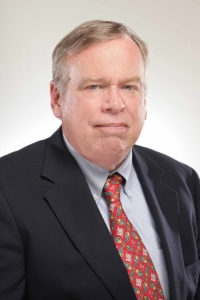Enlisting the help of a residential treatment facility can often be the most difficult decision parents of children with autism face, particularly if that treatment center is far from home. Parents who have likely had little to no separation from their child throughout the daily caregiving process feel innate anxiety leaving their children behind, and there are obvious challenges and stressors for children with autism leaving the comforts of home and family for immersive therapy at a residential treatment facility.

William Killion, PhD, BCBA
But what may be surprising is the anxiety that children with autism sometimes face when transitioning back home after adapting to life at a residential treatment facility. By understanding life at a residential treatment facility and planning ahead to have similar structure in place at home, parents can help make that transition easier for their children.
Children with autism crave structure (Applied Behavior Analysis Education, 2019). They need to be occupied and busy in order to avoid distressing behaviors that can cause stress for themselves and their caregivers. This is why, when children are admitted into a residential treatment facility, they have a very clear schedule and routine that keeps them engaged with positive activities from morning until evening. Days are filled with school work, therapy and plenty of physical exercise. Sports are a great way to keep students active and engaged. Therapists and other staff also work with the children to help improve any physical symptoms and behavior issues, and to provide support for children to develop coping mechanisms (American Psychological Association, 2019).
Children quickly adapt to this busy life at a residential treatment facility. Often times they can become anxious about returning to a home life, particularly one that is unstructured or historically associated with stressful family situations.
Upon completion of the residential treatment – which can be anywhere from about three months to a year – a discharge plan is created for each child, with the goal of maintaining stability so they are able to leave without the need for future re-admittance.
In some cases, children may not need to be fully immersed in a residential program or they may need to transition from a residential program to a group home. While group homes are also residential-based programs, they are less restrictive and give children with special needs the opportunity for more flexibility in the form of day programs and activities outside of the residential home.
The goal upon discharge is to provide the least restrictive placement possible for the individual’s unique needs. Some individuals in a group home may require permanent residence, while most leave after between three months and a year. Once residents are released and ready to head back home, caregivers should follow the discharge plans in place to help the individuals maintain stability at home.
Specifically, to ease the transition, caregivers should:
- Talk to the therapists about what works. Therapists have been working with the child to develop evidence-based, proven strategies for success at home and school, including coping skills to stay calm when agitated.
- Maintain a routine and schedule. While your schedule does not need to mirror that of the residential treatment facility exactly, maintaining a schedule helps children with autism reduce stress by being able to anticipate and prepare for the day’s activities. Keeping them active in an engaging way also helps to reduce anxiety and opportunities for bad behaviors to arise.
The goal of residential treatment is to provide long-term well-being and success outside of the program. For families struggling with behaviors associated with autism, residential treatment is often a necessary strategy for care. By understanding the goals and methods of treatment, parents can increase their child’s success beyond a residential treatment facility.
About William Killion
Dr. Killion is a Board-Certified Behavior Analyst at Springbrook Autism Behavioral Health in Travelers Rest, South Carolina, and author of the Functional Independence Skills Handbook or F.I.S.H. Developmental Program which is a curriculum for ABA used in 83 countries and translated into many languages. He is a former Speech and Language Pathologist with over 40 years of direct experience with individuals with developmental disabilities, including autism. After receiving his B.S. in Speech Pathology with a minor in Psychology, Dr. Killion went on to attain an M.Ed. in Special Education and a PhD in Developmental Psychology. He previously had his own ABA that serviced many areas of South Carolina, and he has served as adjunct psychology professor and consultant to psychiatric and behavioral facilities for behavioral plans for children and adults with Autism and other developmental disabilities. Dr. Killion is a frequent national speaker on ABA and how to address significant negative behaviors.
References
Applied Behavior Analysis Education. (2019). Retrieved from https://www.appliedbehavioranalysisedu.org/why-is-routine-so-important-to-people-with-asd/
American Psychological Association. (2019). Retrieved from https://www.apa.org/helpcenter/autism





